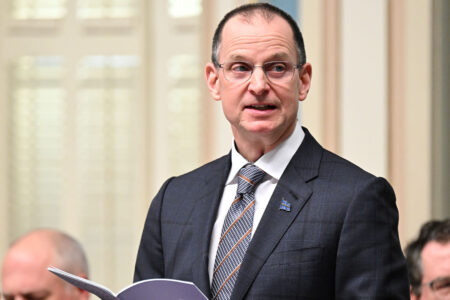
It is amazing how the passage of time changes perceptions. For those of us coming of age and political awareness in the Canada of the 1960s, Canada’s 10 decade was a period of brutal and unsurpassed partisanship. Through a combination of mismanagement and hubris, between 1958 and 1962, John Diefenbaker squandered the largest majority ever seen to that point in Canadian history. His government finally collapsed of its own weight and because of his paranoid leadership style and a cabinet hopelessly divided over placing nuclear weapons on Canadian soil.
Diefenbaker was succeeded by Mike Pearson, the Nobel Prize-winning diplomat, who never really got the hang of politics, and who would keep Diefenbaker at bay but never win a majority of his own. The two loathed each other, and as the insults flew, the country was treated to a succession of tawdry scandals — Hal Banks, Lucien Rivard, the Munsinger affair, the Expo’ 67 construction fiasco — while Pearson lost four cabinet ministers to various forms of corruption and other misadventures. It seemed that national politics could fall no lower.
But 40 years’ perspective provides an entirely different view of what the Pearson minorities actually achieved in the mid to late 1960s. Today, they are widely regarded as the “golden age” of modern nation building, the period when the architecture of durable and treasured national institutions was put in place. Despite all the partisanship of those years, Pearson’s minority governments of 1963-65 and 196568 produced a bounty of landmark progressive legislation, including universal medicare, the Canada and Quebec Pension Plans, the Canada Assistance Plan, Canada Student Loans, the unified armed forces, official bilingualism and the Maple Leaf flag.
With or without the perspective of history, other modern Canadian minority governments were not nearly as successful as Pearson’s:
- The Trudeau minority ran from 1972 to 1974, sustained by an understanding between the Liberals and the NDP. The political flavour of the time was economic nationalism and the result was the creation of the Foreign Investment Review Agency and Petro-Canada as a Crown corporation. Neither survives in its original form today, their original objectives long since overtaken by events and changing attitudes. The only other significant initiative of that period was the indexation of old age pensions — a worthy initiative, but hardly groundbreaking.
- The Clark minority never really took shape in substantive legislative terms, and was famously defeated on the presentation of its first budget.
- The Martin minority of 2004 to 2006 had but one crowning achievement, the negotiation of a 10-year agreement with the provinces to improve health care and reduce wait times, but other initiatives were overshadowed by the sponsorship scandal. Neither the national early learning and child care program nor the Kelowna Accord survived the first year of the Harper government, and the Conservatives suffered negligible political damage from winding them down.
As we assess our current round of minority governments, there are some interesting lessons to be learned from Canada’s minority experiences over the last half century, and especially from the Pearson minorities of long ago.
The most important message is that it takes time for historical assessments to develop and mature, so it is best to let some years pass before exercising judgment on the achievements or failures of a particular government or parliament. What seems incredibly important today could be a minor footnote a generation from now, and a decision that appears to be a sleeper today might turn out to be brilliant with the perspective of 20 years.
The reason is that subsequent events can make or break major decisions taken years earlier, and endow them with the mantle of success or failure. Back in the 1980s, on the day the Mulroney cabinet made the decision to fund the Hibernia project in offshore Newfoundland and Labrador, John Crosbie told his colleagues, “Depending on the price of oil 20 years from now, we will be seen as either visionaries or fools.” Today, no one would question the wisdom of that decision, but at the time, it was far from a sure thing. (There is, by the way, a potential sleeper issue today that with the passage of time could prove to be equally visionary. Many people believe that large public and private investments in carbon capture and storage may well be the most effective single step Canada could take to reduce our greenhouse gas emissions. Those investments are about to happen, and we’ll know in about 20 years how that works out.)
Another important message from the Pearson minorities is that noisy partisanship and a productive parliament are not mutually exclusive, although in the moment, corrosive politics may serve to obscure the creative and important work that is getting done. Forgotten today in the glow of all the achievements of that period is that by the time Pierre Trudeau came along in 1968, most Canadians would have happily offered up their first-born just to bring an end to the partisan bickering.
Pearson’s minority governments of 1963-65 and 1965-68 produced a bounty of landmark progressive legislation, including universal medicare, the Canada and Quebec Pension Plans, the Canada Assistance Plan, Canada Student Loans, the unified armed forces, official bilingualism and the Maple Leaf flag.
By far the most important influence of history’s judgment on the Pearson era is the lasting perception that minority governments do actually get good things done. In fact, the “successful” Pearson parliaments have conditioned how
Canadians look at minority governments to this day. As a result, when we began our latest period of minority government in 2004, we were told by commentators and analysts that minorities were nothing to be feared; that, indeed, they are often more sensitive to public opinion, more collaborative among the parties and therefore more accountable to the electorate. Well, maybe not so much!
Minority governments in Canada are still the exception to the rule, but we actually have a fair amount of experience with them. Canada experienced its first minority in 1921, and in the succeeding 88 years, 12 separate minority governments have been in office for a cumulative total of 20 years and three months. That’s a little more than 22 percent of the time. The longest minority lasted three years and seven months (Mackenzie King, 1922-25), and the shortest lasted five months (John Diefenbaker, 1957-58). The average duration of a minority government is one year, five months and nine days.
Writing on the Web site Mapleleafweb.com, Rhonda Lauret Parkinson and Jay Makarenko have presented a useful taxonomy of minority governments in the Canadian context. They suggest that the strategies necessary for a minority government to survive result in three basic kinds of minorities:
- Ad hoc minorities, in which the government negotiates support on a case-by-case basis. Such minorities are relatively unstable, because there are no durable alliances and no guiding principles to govern interparty relationships. Issue-by-issue compromise becomes the order of the day.
- Loose alliance minorities, where “the governing political party strikes an informal deal with other political parties to ensure majority support. Often this involves the governing party taking on certain policies that are central to the other parties’ platforms.”
- Formal agreement minorities, in which two or more political parties that together hold a combined majority agree on a written document that details the specific obligations of the parties and sets a time frame in which the agreement will run.
Coalition government is the final step in the continuum, in which “two or more parties enter into a long-term agreement to form the government, to the exclusion of all other parties.” Cabinet includes representation from the members of the coalition.
It’s relatively easy to slot the recent Canadian minority governments into these categories. Most have taken the “ad hoc” approach, with the Pearson, Clark, Martin and Harper governments all falling into this category. None of these governments had a particular opposition party as a regular “dance partner,” although the Martin government made a one-off deal with the NDP to sweeten its budget and avoid defeat in the spring of 2005.
The 1972-74 Trudeau government was a “loose alliance” minority through its arrangement with the NDP, and the David Peterson Ontario government from 1985 to 1987 was a “formal agreement” minority, again with the NDP.
Interestingly, the only coalition government in Canadian history occurred in a majority rather than minority situation. During the First World War, Conservative Prime Minister Robert Borden formed a “Union Government” of pro-conscription Conservatives and Liberals. Coming back to the present, while it’s way too early for an informed assessment of what the past five years have produced in terms of landmark initiatives or groundbreaking legislation, it’s an opportune time to ask what history tells us about the factors that create minority governments, what makes them stable or unstable and how the political ground rules differ between majorities and minorities. When a minority is elected in Canada, it’s obvious that it results from a divided electorate, and much is often read into the “public mind”: “Voters wanted to make a change, but they don’t yet trust the opposition with a majority,” or “Voters wanted to teach the government a lesson, but they weren’t ready to turn it over to the other guys.” Whether a rational and purposive collective “public mind” actually exists is highly doubtful, but the theory has some validity.
What is different about the current round of minority government is that under the leadership of Stéphane Dion and Michael Ignatieff, the Liberals essentially ceded the “duty to oppose” aspect of their role as official opposition. They became the default saviours of the Harper government, and compounded their problem through a never-ending series of loud threats and abject back-downs.
With the benefit of hindsight, it can often be seen that minorities are transitional — a halfway house in the movement from a government of one political stripe to another. This was certainly the case in the 1950s and 1960s, when the long-running King-St. Laurent government gave way to the Diefenbaker 1957 minority, quickly to be succeeded by the Conservative majority of 1958. Similarly, as the Diefenbaker majority lost favour, voters first reduced Diefenbaker to a minority, then elected the first of two Pearson minorities in 1962, and those minorities proved to be transitional to a long Liberal run in government under Pierre Trudeau. The same phenomenon occurred in the more recent transition from Liberal to Conservative. The Martin minority of 2004-06 proved to be transitional between the 12 years of Liberal rule under Chrétien and Martin and the Harper Conservatives.
There’s another kind of transition that fosters the creation of minorities, and it’s a transition within the political system, and particularly with the sudden advent of a third or fourth political party. It’s clear that the surprising rise of the Progressives in the 1920s (58 seats in 1921 and 22 seats in 1925) denied both the Liberals and the Conservatives the possibility of a majority throughout that period. Majorities did not return until the Progressives all but disappeared in 1930. Similarly, the collapse of Brian Mulroney’s “grand coalition” between soft Quebec nationalists and western conservatives in 1993 led directly to the rise of both the Bloc Québécois and the Reform Party. After the reunification of the PCs and the Alliance, the Conservatives regained the political mass to challenge the Liberals, but the persistence of the Bloc with its constant 50-odd seats has been the principal cause of Canada’s recent minorities.
If minorities are often transitional, then what strategies do the parties use to make the transition from minority to majority, or from opposition to government?
The parliamentary rules of the road for political parties in the Canadian system are simply summarized. The government seeks to implement its policies and programs through legislation, regulation and spending allocations. It positions its initiatives as an efficient and effective response to the issues of the day, the challenges facing the country and the interests of citizens. Meanwhile, the role of the opposition is to oppose the government’s proposals, to critique them, to offer alternatives and to hold the majority party to account for its management of government and the economy. In the case of the official opposition, these responsibilities extend to the preparation and presentation of a comprehensive plan for an alternative government at the next general election.
In a majority situation, these rules of the road play out in a fairly predictable fashion. A majority sets a dependable three-to-five year lifespan for a government and the parties govern themselves accordingly. The government knows it has several years to implement its platform. It can take on unpopular, complex or time-consuming issues early in its mandate knowing it will have the time to rebuild the political capital it needs to expend to make challenging reforms.
Majority realities impose themselves on the opposition parties as well. In the first couple of years of a majority mandate, they focus on laying down markers for future use. Blocking legislation or imposing policy alternatives is simply not on, so they play the long game, building a critical narrative of the government record, advancing alternative policies and developing themes they will use later. Partisan attacks from the opposition on the government in the early years of a majority tend to be pro forma.
All of these basic dynamics change in a minority situation.
Because a minority removes temporal certainty from the picture, all of the essential political roles of government and opposition are speeded up, and the need for electoral readiness replaces certainty and predictability. All parties are in play all the time, and politics and short-term positioning are in the ascendant, because no one knows how long the parliament will last. And virtually every issue — from the substantive to the minuscule — becomes an opportunity for short-term partisan advantage.
What also results is a confrontation between two basic principles of our system: the government’s “right to govern” and the official opposition’s “duty to oppose.” No one would deny the right of a minority government to govern; reality demands it. Similarly, no one would gainsay the need for the official opposition to develop its plan for an alternate government. But all three groups — the government, the official opposition and the other parties — are subject to another key consideration. That consideration is how to read the public’s take on when the next election ceases to be excessive and unnecessary and becomes an acceptable and logical outcome of a minority having run its course.
Hence we come to the need to “make Parliament work,” which is a constant of minorities and also an essential. If the various parties never find ways to put some water in their wine, every minority would fall on the presentation of its first Throne Speech or first budget, and we would literally have an election every year until someone scored a majority.
What is different about the current round of minority government is that under the leadership of Stéphane Dion and Michael Ignatieff, the Liberals essentially ceded the “duty to oppose” aspect of their role as official opposition. They became the default saviours of the Harper government, and compounded their problem through a never-ending series of loud threats and abject back-downs. A number of consequences ensued. The NDP and the Bloc Québécois were absolved of all responsibility for “making Parliament work.” They had a completely free ride — free to vote against the government in virtually all circumstances, and also free to ridicule the Liberals for their “lack of principle.” But a major comeuppance was just around the corner.
This came in the form of Michael Ignatieff’s early-September announcement that the days of Liberals automatically propping up the government were over. Ignatieff’s strategic objective was to get a large and painful monkey off his back, and at the same time to force the NDP and the Bloc to share in the pain of making Parliament work. As often happens in politics, the general public didn’t see the strategic motivation for what Ignatieff was doing; they understandably assumed he was hell-bent to force an election. As a result, Ignatieff appears, in the short term at least, to have exchanged the monkey for a tiger — in the form of public anger at the prospect of another election less than a year since the last.
On the other hand, Ignatieff’s gambit seems to have worked, at least in its impact on the NDP and the Bloc. As of mid-September, the government’s ways and means motion has passed without problem, and the NDP has signalled its intent to support the government at least until its employment insurance reforms are through Parliament later this fall. Still, the Liberals need to be concerned about how they handle the next few weeks. If their “oppose-everything-the-government-proposes” approach is ironclad, they will gain marks for consistency. But in the meantime, they will be making no contribution to making Parliament work, while turning over the balance of power to Jack Layton and the NDP.
Whether this September’s events presage a change in the way the current minority Parliament is made to work remains to be seen. The next likely trigger point for a possible election is the federal budget, due to be delivered next March after the Olympics. We’ll see then.
Photo: Shutterstock









